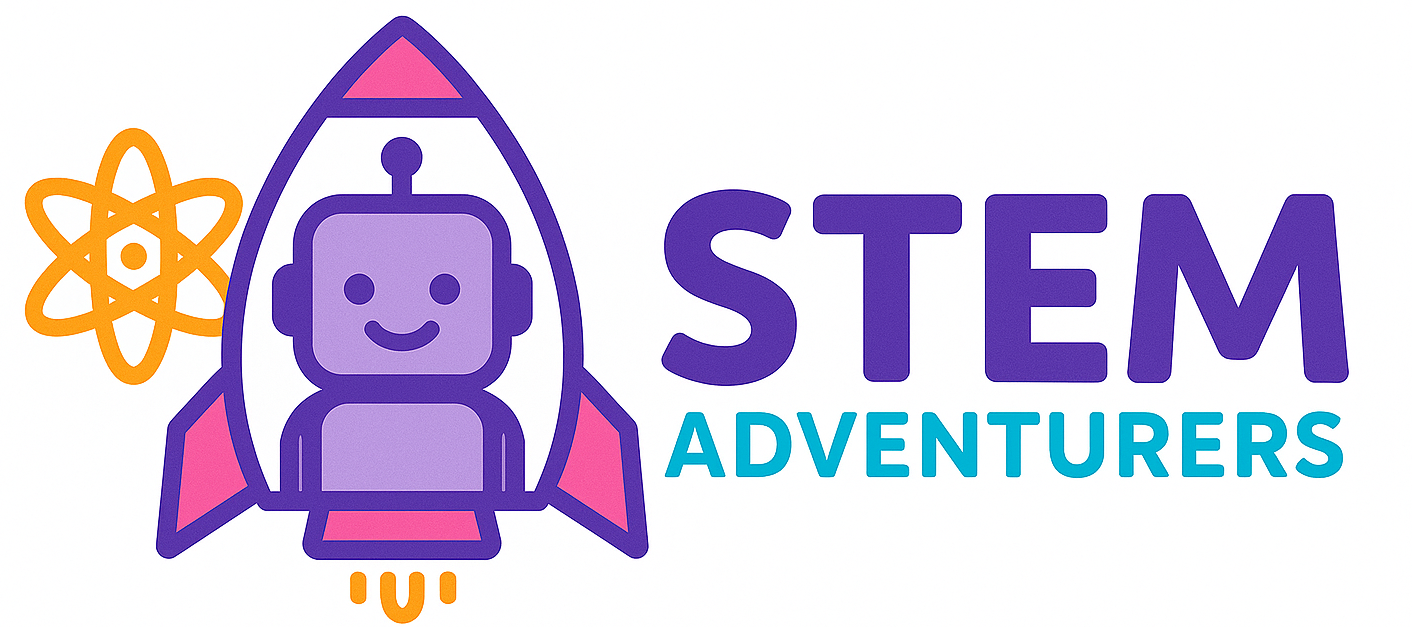What is STEM?
You’ve probably heard the term STEM a lot lately, but what exactly does it mean?
Simply put, STEM is an acronym that stands for:
Mathematics
Science
Technology
Engineering
More Than Just Subjects: A Way of Thinking
While STEM is based on these four core school subjects, it’s much more than just a list of classes. Think of it as a holistic approach to problem-solving and understanding the world. Instead of teaching these subjects in isolation, a STEM approach shows kids how they all connect and work together in real life.
- Scientists ask “why?” and “how?”
- Engineers use science and math to design and build things that solve problems.
- Technologists create and apply tools to make things happen.
- Mathematicians provide the tools for measuring, analyzing, and calculating.
STEM is about encouraging the natural curiosity all kids have and teaching them to question, investigate, experiment, and innovate.
More Than Just Subjects: A Way of Thinking
While STEM is based on these four core school subjects, it’s much more than just a list of classes. Think of it as a holistic approach to problem-solving and understanding the world. Instead of teaching these subjects in isolation, a STEM approach shows kids how they all connect and work together in real life.
- Scientists ask “why?” and “how?”
- Technologists create and apply tools to make things happen.
- Engineers use science and math to design and build things that solve problems.
- Mathematicians provide the tools for measuring, analyzing, and calculating.
STEM is about encouraging the natural curiosity all kids have and teaching them to question, investigate, experiment, and innovate.
Why STEM is Important for Your Child’s Future
Why is everyone talking about STEM now? It’s because the world is changing rapidly, and STEM skills are becoming essential in almost every career – not just for scientists!
Real-World Skills: When a child designs a small cardboard bridge (engineering), calculates the load it can hold (math), and tests its structure (science), they’re learning skills like collaboration, creativity, and logical reasoning.
Future Jobs: Many of the fastest-growing and highest-paying jobs require a background in STEM. From developing sustainable energy solutions to creating new apps, these fields are driving our economy.
Critical Thinking: STEM teaches your child to look at a problem, break it down, try different solutions, and learn from mistakes. This resilience and critical thinking is valuable in every aspect of life, from managing a budget to deciding on a car to buy.
How to Encourage STEM at Home (It’s Easier Than You Think!)
You don’t need a science lab at home to foster a love for STEM! You can integrate it naturally into your daily routine:
- Ask “How?” and “Why?”: When something breaks, ask your child, “How could we fix this?” or “Why do you think that happened?”
- Baking is Math and Chemistry: Following a recipe is a perfect lesson in measurement, fractions, and chemical reactions!
- Building Challenges: Use LEGOs, blocks, or even household items like newspaper and tape for a fun challenge. “Can you build the tallest tower that can hold a tennis ball?”
- Explore Nature: Go for a walk and talk about local plants, weather patterns, or how a simple machine like a seesaw works.
By making STEM fun and relatable, you’re not just preparing your child for a job – you’re preparing them to be a creative and confident problem-solver in the 21st century!
